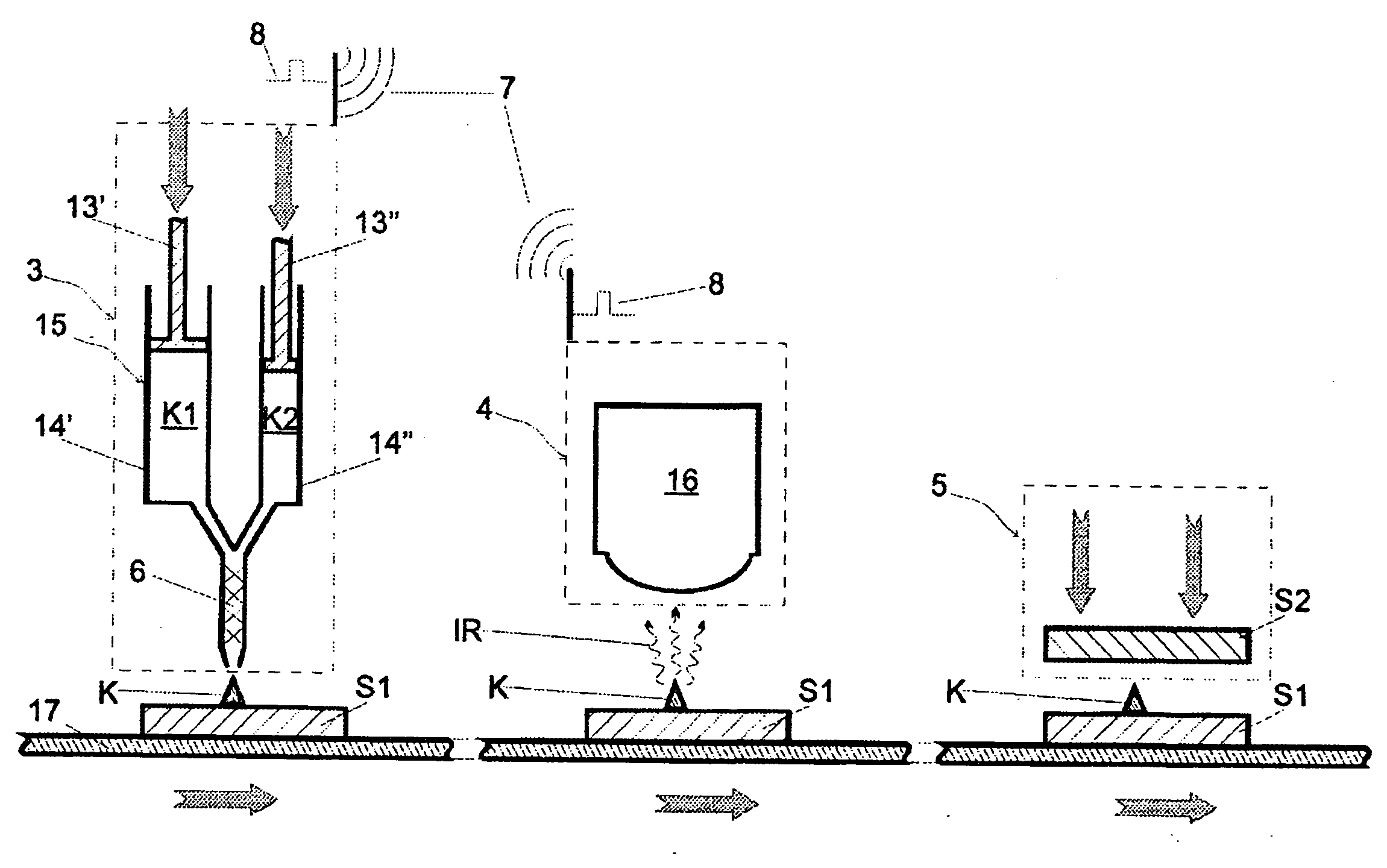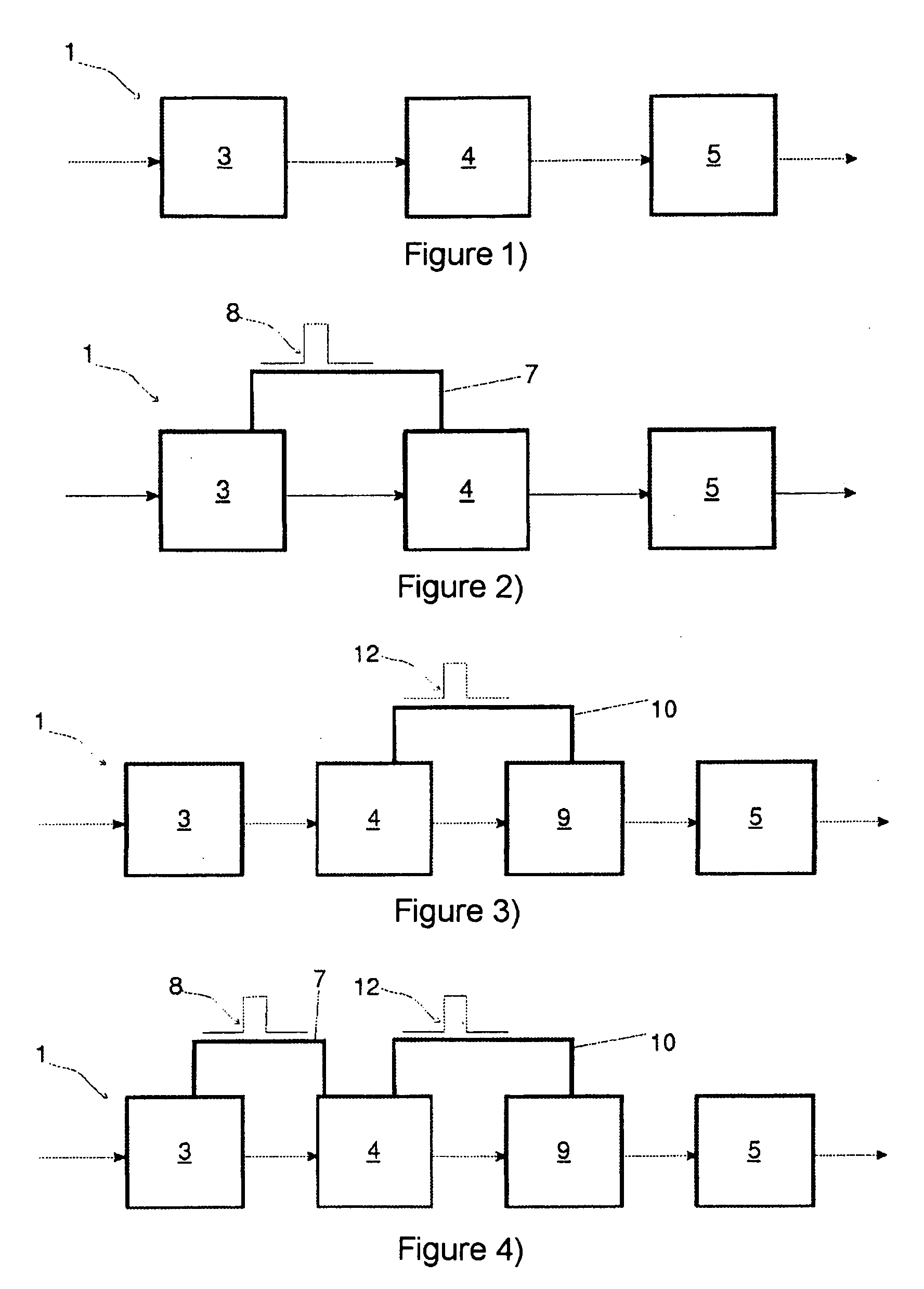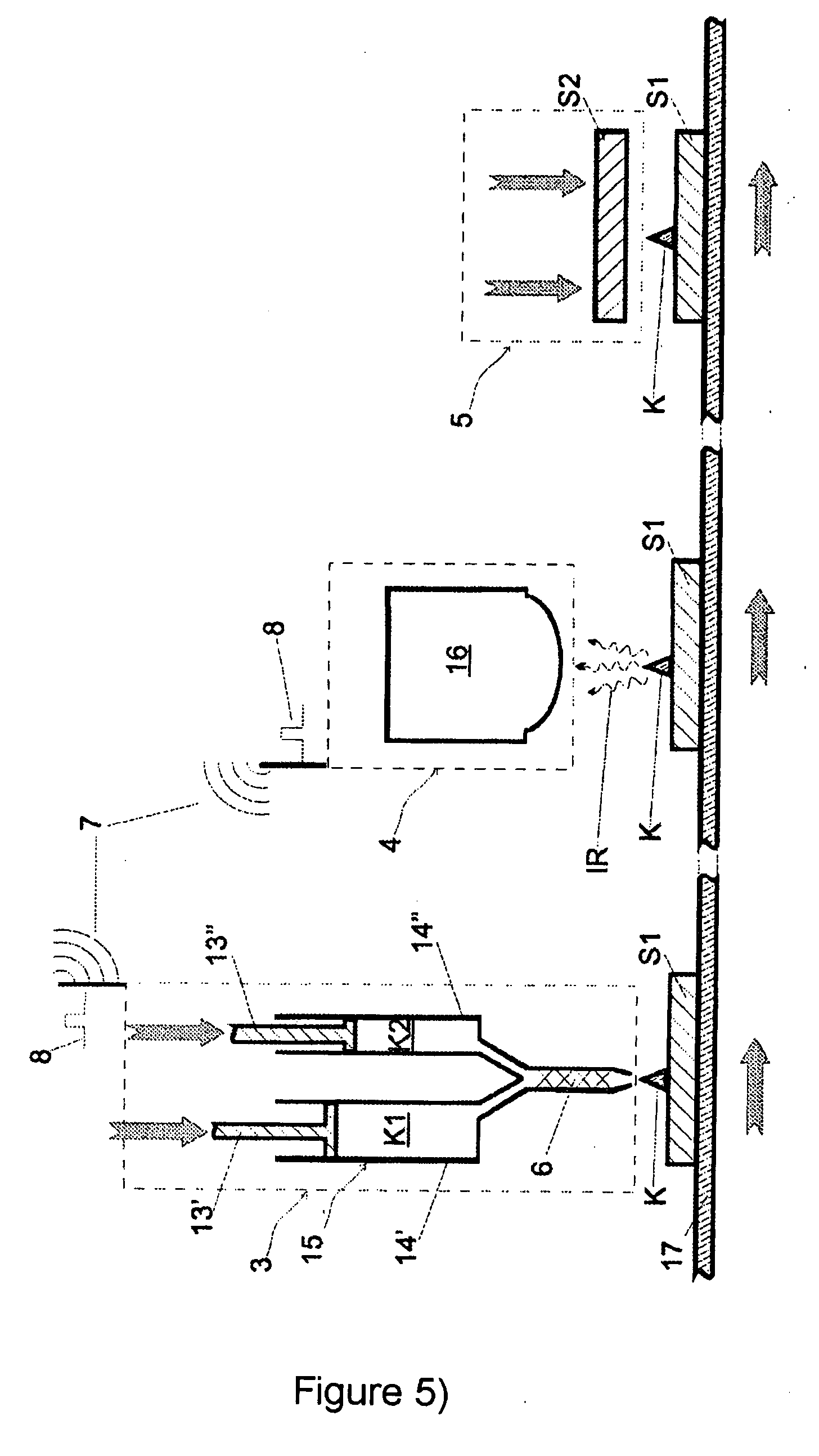Use of Infrared Thermography as an Agent for Determining the Hardening Course of a Two-Component Composition
a two-component composition and infrared thermography technology, applied in the direction of pile separation, building components, lamination, etc., can solve the problems of inability or difficulty to realize inability to observe the visual method of ascertainment, and inability to achieve colorless or light-colored compositions in this way. , to achieve the effect of reducing the cost of rejecting or reprocessing, and rapid and reliable process
- Summary
- Abstract
- Description
- Claims
- Application Information
AI Technical Summary
Benefits of technology
Problems solved by technology
Method used
Image
Examples
examples
[0086]A two-component adhesive was prepared that has the ingredients described in table 1. Components K1 and K2 were each dispensed into one cartridge cylinder of a 200 ml twin cartridge (10:1, Mixpac, Switzerland), or into two hobbocks, respectively.
TABLE 1AdhesiveParts by weightComponent K1tetrahydrofurfuryl methacrylate42Hycar VTBNX 1300 X3321Paraloid EXL 260016p-toluidine1chalk20Component K2benzoyl peroxide paste (45% in25plasticizer)chalk25extender35organic thixotropic agent14black pigment1
Experimental Setup
[0087]The following experiments took place in a climatically controlled cabinet adjusted to the respective temperature. The adhesive mixed by static mixer was applied as a bead of adhesive to a rubber mat as insulation layer, with a bead length of approximately 30 cm. A MIDAS 320 infrared camera from DIAS Infrared GmbH, Germany, was fixed on a stand at a distance of around 50 cm from the adhesive beads, connected to a laptop and controlled by means of the Midas Spec R / T comp...
PUM
| Property | Measurement | Unit |
|---|---|---|
| temperatures | aaaaa | aaaaa |
| temperatures | aaaaa | aaaaa |
| temperatures | aaaaa | aaaaa |
Abstract
Description
Claims
Application Information
 Login to View More
Login to View More - R&D
- Intellectual Property
- Life Sciences
- Materials
- Tech Scout
- Unparalleled Data Quality
- Higher Quality Content
- 60% Fewer Hallucinations
Browse by: Latest US Patents, China's latest patents, Technical Efficacy Thesaurus, Application Domain, Technology Topic, Popular Technical Reports.
© 2025 PatSnap. All rights reserved.Legal|Privacy policy|Modern Slavery Act Transparency Statement|Sitemap|About US| Contact US: help@patsnap.com



